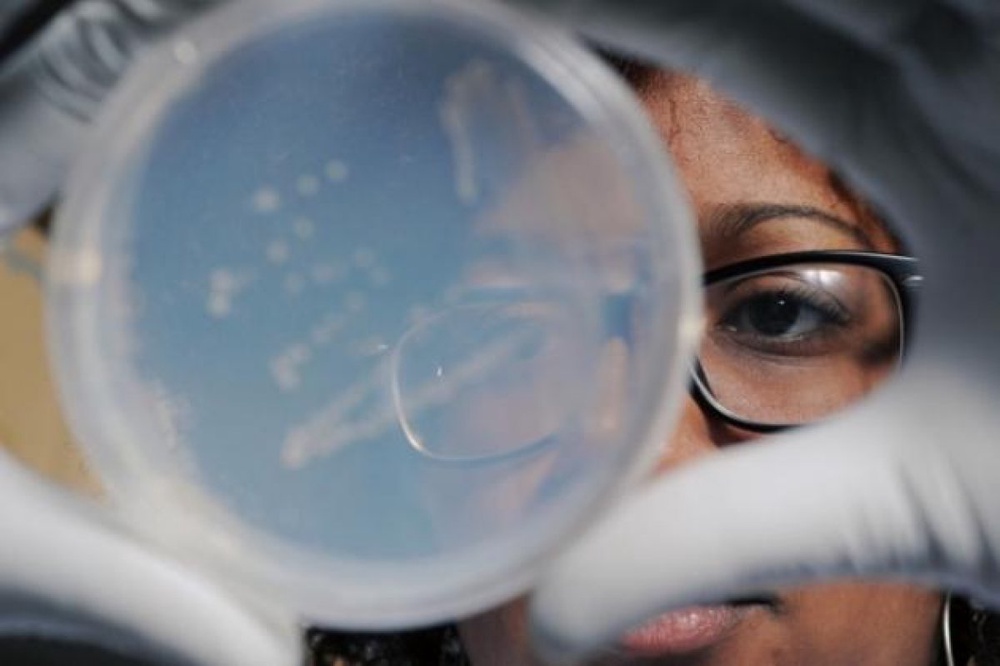
Diverse underground ecosystems buried deep beneath the Earth's crust may offer clues to the origins of life on Earth, several recent studies have revealed, AFP reports. Whether it is tiny worms found wriggling in the depths of a South African mine or micro-organisms discovered six kilometers (3.7 miles) under the surface in China, subterranean life forms are found everywhere. "We are making incredible discoveries about the nature and distribution of deep microbial life," said Robert Hazen, executive director of the Carnegie Institution's Deep Carbon Observatory geophysical laboratory. "If you are near the surface from a few centimeters to many kilometers, there is microbial life anywhere you go. "You drill deep holes, you bring up the core and there are microbes living in the rocks." The Deep Carbon Observatory was set up to analyze the amounts, sources and movement of carbon within Earth. Scientists say microbes found in the oceanic crust and sediment layers lying below them could play an important role in microbial diversity by inserting themselves into the genome of micro-organisms. "It's an intriguing part of evolution," said John Baross, a professor at the University of Washington in Seattle. "The deep sub-surface may have acted as a natural laboratory for the origin of life in which multiple experiments could have been carried out in tandem," he said. "You have everything you need to make life including energy, water and carbon-rich molecules that could have made the underground rather than the surface of the planet, the cradle of the very first life on earth. "We may find totally new kinds of life as we reach greater depths, higher temperatures and pressures. Quite possibly Earth's deepest life doesn't use DNA and proteins the way normal cells do." The variety of bacteria and viruses living in this dark realm has been described by scientists as an "underground Galapagos." Mark Lever, of the Center for Geomicrobiology at Aarhus University in Denmark, noted that micro-organisms in the Earth's crust use hydrogen to convert carbon dioxide into organic materials. Although the vast ecosystem is probably based mainly on hydrogen, several different forms of life exist in this extreme environment, he added in a study published Friday in the journal Science. Finding life in Earth's most hostile environments could create a picture of life found on other planets, such as Mars. Researchers at the University of Maryland studying micro-organisms in a salt lake in Antarctica on behalf of the US space agency NASA have found subtle variations in proteins from extremophile bacteria compared to those of ordinary micro-organisms. The variations could allow them to survive in environments such as Mars, notable for extreme temperatures and high salinity, according to a study published in the journal PLoS One.





Diverse underground ecosystems buried deep beneath the Earth's crust may offer clues to the origins of life on Earth, several recent studies have revealed, AFP reports.
Whether it is tiny worms found wriggling in the depths of a South African mine or micro-organisms discovered six kilometers (3.7 miles) under the surface in China, subterranean life forms are found everywhere.
"We are making incredible discoveries about the nature and distribution of deep microbial life," said Robert Hazen, executive director of the Carnegie Institution's Deep Carbon Observatory geophysical laboratory.
"If you are near the surface from a few centimeters to many kilometers, there is microbial life anywhere you go.
"You drill deep holes, you bring up the core and there are microbes living in the rocks."
The Deep Carbon Observatory was set up to analyze the amounts, sources and movement of carbon within Earth.
Scientists say microbes found in the oceanic crust and sediment layers lying below them could play an important role in microbial diversity by inserting themselves into the genome of micro-organisms.
"It's an intriguing part of evolution," said John Baross, a professor at the University of Washington in Seattle.
"The deep sub-surface may have acted as a natural laboratory for the origin of life in which multiple experiments could have been carried out in tandem," he said.
"You have everything you need to make life including energy, water and carbon-rich molecules that could have made the underground rather than the surface of the planet, the cradle of the very first life on earth.
"We may find totally new kinds of life as we reach greater depths, higher temperatures and pressures. Quite possibly Earth's deepest life doesn't use DNA and proteins the way normal cells do."
The variety of bacteria and viruses living in this dark realm has been described by scientists as an "underground Galapagos."
Mark Lever, of the Center for Geomicrobiology at Aarhus University in Denmark, noted that micro-organisms in the Earth's crust use hydrogen to convert carbon dioxide into organic materials.
Although the vast ecosystem is probably based mainly on hydrogen, several different forms of life exist in this extreme environment, he added in a study published Friday in the journal Science.
Finding life in Earth's most hostile environments could create a picture of life found on other planets, such as Mars.
Researchers at the University of Maryland studying micro-organisms in a salt lake in Antarctica on behalf of the US space agency NASA have found subtle variations in proteins from extremophile bacteria compared to those of ordinary micro-organisms.
The variations could allow them to survive in environments such as Mars, notable for extreme temperatures and high salinity, according to a study published in the journal PLoS One.
United States
Asia Pacific
China
Discovery
DNA
Earth
Middle East & Africa
news
science
South Africa
Americas


 +7 (777) 001 44 99
+7 (777) 001 44 99















































